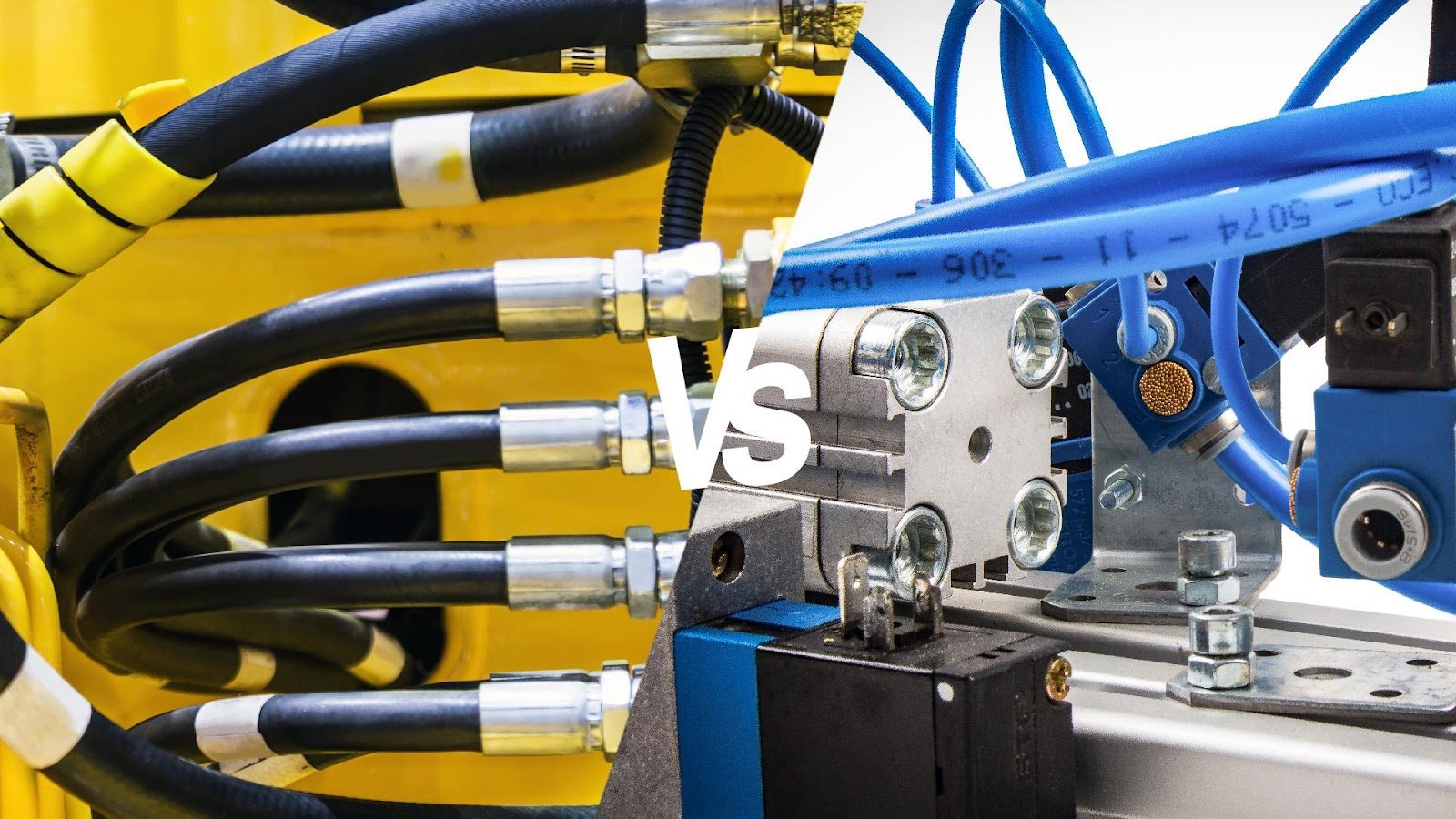Hydraulic and pneumatic systems are required for various tasks in different industries. But before using either system, one needs to understand the mechanical difference between them.
Let's take a closer look at the difference between hydraulic and pneumatic machines.
What is a Pneumatic System?
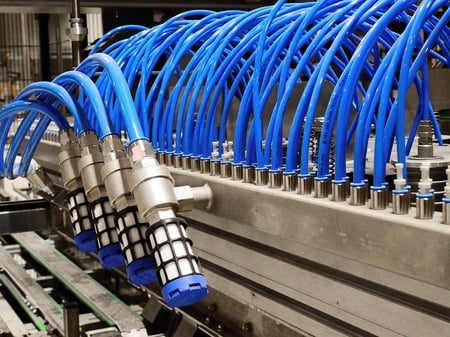
(pneumatic system)
The pneumatic system uses pressurized air to influence mechanical motion. It is based on the principles of pressure and is powered by compressed air or gas. The system has different components, including air tanks, standard cylinders, compressors, hoses, and transition lines.
Applications: Pneumatic systems are commonly used in medical applications (dentistry), food manufacturing, construction, robotics, mining mills, pharmaceutical, and more. This system was primarily used for shock absorption because the compressed gas makes it less susceptible to shock damage.
What is a Hydraulic System?
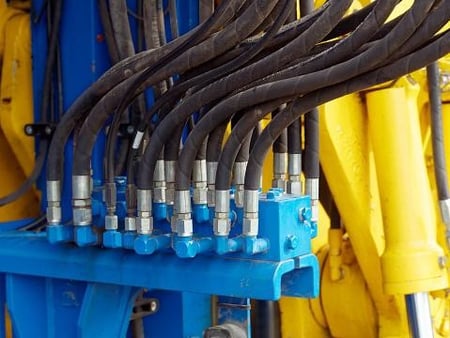
(hydraulic system)
Hydraulic system uses pressurized liquids for transferring mechanical energy and covering that energy into useful work. Like the pneumatic system, hydraulics also uses valves for the velocity and force of actuators.
Applications: Hydraulic systems involve the risk of oil leaks from valves or hoses. Therefore, the system is not used in anything that could be ingested. Common industrial applications of a hydraulic system include elevators, dams, amusement parks, hydraulic presses, turbines, wing flaps on aircraft, wheelchairs, hydraulic lift, and more.
Pneumatic vs Hydraulic Systems: What's the Difference?
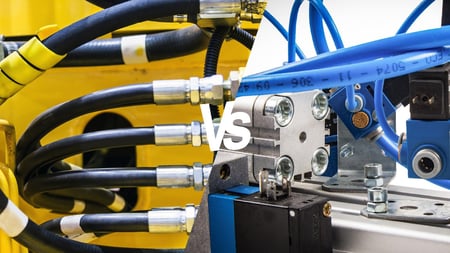
(pneumatic system vs hydraulic system)
The main difference between these two systems is that hydraulics use liquids, which don't compress, and pneumatic uses gasses, which can compress. This thing influences how both the systems are built and how they work.
Hydraulics are generally bigger and slower. However, they offer better power and precision. In contrast, pneumatic systems are more compact and quicker. But they offer less force and precision.
Here are some more differences between pneumatic and hydraulic systems.
#1 Strength
For high-strength applications, hydraulics are the best. This system uses an incompressible liquid medium with a high mass density. Therefore, hydraulic devices can create higher pressure levels and use them to transmit the power for use. Most industry equipment requires anything between 1,000 to 5,000 pounds per square inch (psi). But certain hydraulic powered machines operate at 10,000 psi or more.
Pneumatic systems use gasses that have a low mass index. The gasses can be easily compressed up to several hundred psi. That's why equipment that can be operated between 80 to 100 psi uses pneumatic systems. This system cannot be used to operate heavy equipment. In addition, the compressed air can fluctuate unexpectedly, causing the operation to become unstable.
#2 Hygiene
In the hygiene field, pneumatics wins a point as the only thing that will leak in this system is air. When the gasses are compressed, they are cleaned of metal particles, oil, or water within the system. Many environmentally-conscious companies use pneumatic systems to follow greener manufacturing practices.
Pneumatic systems are also installed in clean rooms like pharmaceutical laboratories and food industries. These environments cannot use leaking hydraulic machines as there will be a risk of contamination.
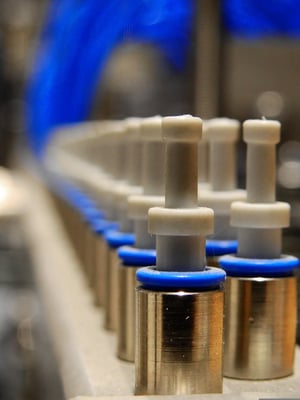
Hydraulics involves the possibility of leaking oil or water through worn hoses or faulty seals. It can contaminate the industrial environment and corrode the hardware. If you are using hydraulic systems, you also need storage tanks and should properly dispose of the residue.
#3 Speed
Pneumatic systems have better speed than hydraulics. That's because the compressed air flow rate is high. It can quickly release energy allowing high-speed motion of actuators. Air quickly flows through the pipework as it has less mass density. Pneumatic actuators deliver better productivity because they can achieve increased duty cycling and high cycle speeds. The rapid cylinder movement becomes more useful as the equipment is also available in very small sizes.
After dumping compressed air, the valves and pneumatic cylinders can quickly change direction. The system requires no additional disposal. In contrast, hydraulic systems are slower because they use water or oil. Compared to air, hydraulic or mineral oils have greater resistance. Here, the oil viscosity makes the system slower.
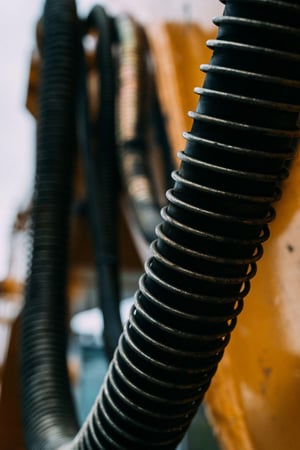
While hydraulic fluid power can help develop better force and pressure, they are not as rapid as air. That's why these systems take longer to run. If there is a leak or emergency, the hydraulic fluids need to be vented properly and should be rerouted back to their tank.
#4 Energy
One must consider multiple factors when comparing hydraulics and pneumatics on energy consumption. But both systems need electrical systems to drive them. Continuous running of the air compressor is required for the proper functioning of pneumatic machines. Also, the air supply needs constant replenishment as it cannot be recycled. Therefore, energy consumption is high.
In addition, the system loses energy through heat produced during the compression process. But you can make your pneumatic system much more energy efficient through different measures. In contrast, the same hydraulic fluid power can be used again and again after the initial start-up. With a good filtration system, you can make hydraulics energy-efficient.
But it still needs electric power to run the pump. Unfortunately, most of the energy consumed through pumps is wasted. It happens because the hydraulic fluids have to be in constant circulation to maintain the system pressure.
#5 Safety
Between pneumatic and hydraulic systems, pneumatics is safer. That's because compressed air leakage is not dangerous. But the gasses used in portable equipment might be dangerous.
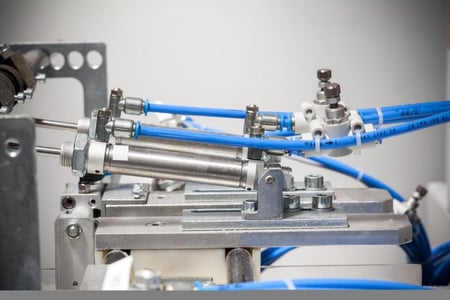
#6 Complexity
Hydraulic systems are more complex because they are larger. These systems have fewer moving parts and can be easily controlled through levers or push buttons. Hydraulics also have complex engineering that requires valves, hoses, and a pump. These systems must be connected to an external energy source and tank the liquid medium.
You can control different hydraulic applications in a manufacturing plant through a centralized power unit. Newer hydraulic systems have better power, speed, and pressure systems. In contrast, pneumatics are simple. The component parts are made from cheaper and less complex materials because the system can be operated at a lower pressure.
Furthermore, no precautions need to be built as the fluid medium is neither combustible nor corrosive. Lately, pneumatic machines have been used in a variety of pneumatic equipment.
#7 Maintenance
The fluid medium in pneumatics is air, so the system is easier to maintain. But the system needs regular preventive maintenance and inspection to run effectively. Common maintenance in the pneumatic system includes checking the seals to see if there's any air leakage. Regular cleaning and replacement of filter-regulator-lubricator units are important.
In contrast, hydraulics are more likely to get corroded. These systems need regular monitoring to know how much fluid medium has affected the pipe. Water as hydraulic oil can cause oxidation, while others can cause corrosion.
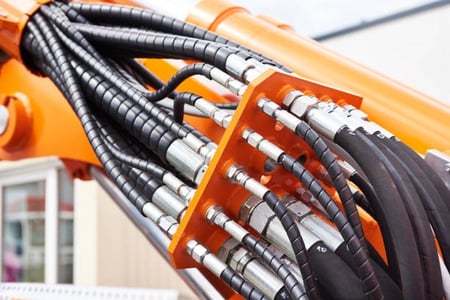
Therefore, regular maintenance and checks are needed for critical components like valves and hoses to keep the system running.
When to Use Hydraulic and Pneumatic Systems
Hydraulic systems are best for heavy lifting equipment and higher force applications. In comparison, pneumatic devices are great for mechanical and lighter engineering applications.
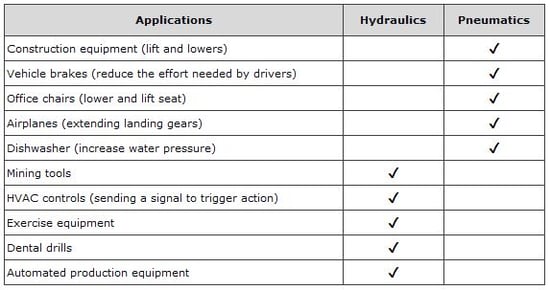
Difference Between Hydraulics and Pneumatics Actuator
Hydraulic actuators use fluid and can produce great force to handle higher pressures. These systems can produce 25 times more force than a pneumatic cylinder. As hydraulic or mineral oil is a relatively incompressible liquid media, the actuators can hold torque without continuous application of fluid pressure from the power source.
But leaking hydraulic actuators can cause contamination. It can also damage the internal and external working parts. These systems can be quite noisy, even with noise-reduction equipment. On the other hand, pneumatic actuators need less power. They are more consistent and reliable. As they use compressed air, there is no requirement for air motors.
But these actuators might fluctuate and lose pressure because the air can be compressed. Also, the pneumatic actuator and air compressor should be closely located so the system can run continuously. In extremely low or high temperatures, pneumatics can be more reliable than hydraulics.
Cost of Pneumatic and Hydraulic Systems
The cost of electricity required to operate a pneumatic and hydraulic system can also act as a major differential factor. Pneumatic systems seem more cost-effective as they are more electrically efficient. But these require regular maintenance that can influence productivity and efficiency.
Hydraulic systems have a higher initial cost. The lifespan of equipment plays a major role in purchasing a hydraulic system. You can make a system more durable with regular preventive maintenance. You can control the hydraulic system's cost simply by using a central power supply, which can operate several equipment. A central power source can lower the cost and increase machine performance.
Conclusion
Hydraulics and pneumatics work on the same principles but have unique applications, characteristics, and features. As pneumatic systems use pressurized air, there is no risk of an oil leak. But these systems do not have better strength as the compressed air can fluctuate unexpectedly.
In contrast, hydraulics use oil or water as a fluid, which can be dangerous when leaked. These systems cannot be placed in industries that produce edible items. Both systems have certain advantages and disadvantages. So, caution should be exercised to maintain safety.
There You Have It!
We hope that you are able to have a better understanding on the differences between pneumatics and hydraulics system and where they can be used. Subscribe to our blog now if you would like to receive more about product updates and .
Interested to Learn More About Pneumatics or Hydraulics?
Like to know how Pneumatic or Hydraulic technology can help you in your operation? Get in touch with us below!

